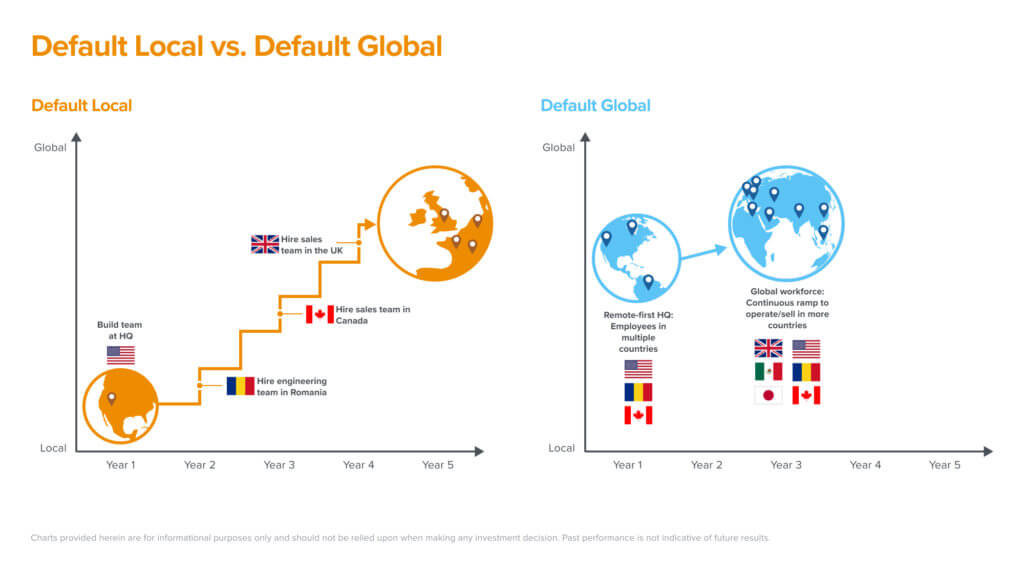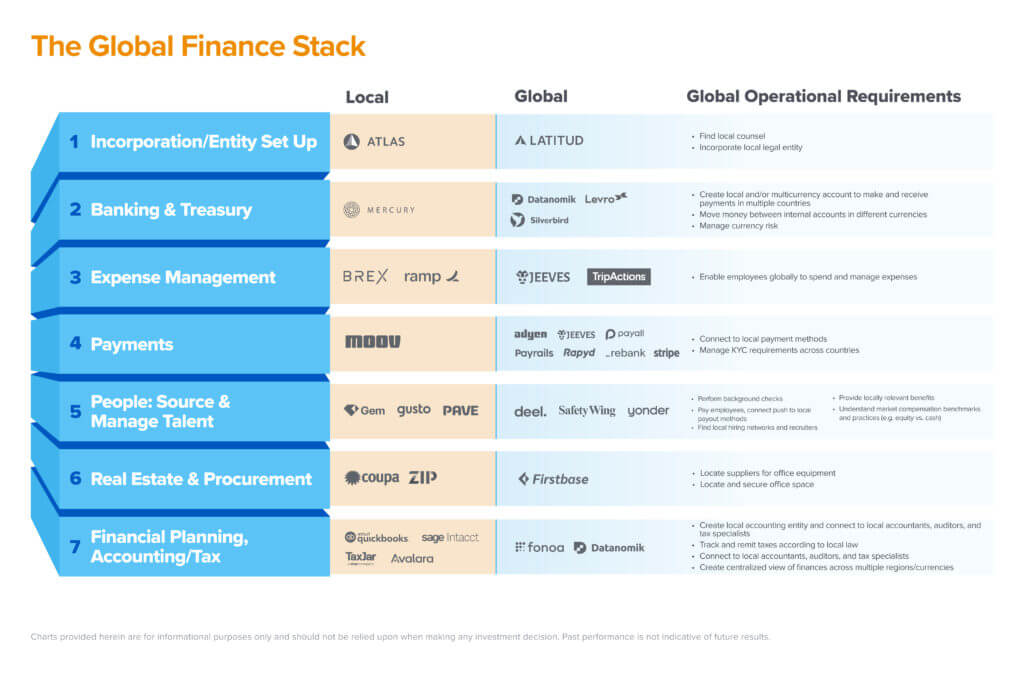Lee este artículo en Español. / Leia esse artigo em Português.
As the successful businesses of tomorrow launch in multiple countries at a time, opportunities abound for ambitious startups looking to build the internal software systems these companies will need to grow.
For decades, startups largely followed a well-trodden playbook for how to start and scale a company. First, pick an HQ city (usually where the founding team lives) and then hire your first 50-100 employees and (mostly) serve customers in that area. After two to three years, open a second office after talent becomes harder to hire, or you need local sales support to serve customers in another geography. Rinse and repeat until you have several offices around the world and have effectively gone “global.”
While not obsolete, this model is being supplanted by a new and emerging model that is global from day one. Thanks in part to the remote-only experiments that Covid forced so many to run, new companies are no longer tethered to the hometown of the founder, nor limited to hiring local talent. The first 50-100 employees may span several countries, let alone cities and states.
TABLE OF CONTENTS
The arrival of these new default global companies brings new challenges. For example, software that supports external functions like marketing and sales for non-HQ locations are well developed. Tools like Marketo and Salesforce respectively allow companies to send customized marketing emails by local language, and to support sales in multiple geographies. However, for human resources, finance, and other internal systems, software hasn’t historically existed to effectively onboard, pay, and provide benefits to employees in multiple countries, nor support expense reporting, banking accounts, and treasury management.
Herein lie the opportunities. The software stack for a default global company’s functions needs to be international from the start in order to better integrate everything from local employment law and talent sourcing to multi-country incorporation and expense management.
So even if It may seem like the tech story of the global workforce has already been told (Zoom! Slack! etc.), the reality is, most of the companies that will be needed to support these new “default global” companies have yet to be built. Below, we discuss some of the opportunities we see:
TABLE OF CONTENTS
Much opportunity exists to build software, especially for the HR and finance teams that set companies up for their default global success. However, it’s the second-order implications of this shift that are perhaps even more impactful.
As more companies hire early employees in more countries, a more globally diverse set of executives will emerge. These execs will have helped companies scale from 0 -> n, making many of them likely to become future founders—except now, these would-be CEOs won’t be starting companies in the commerce centers of the last century (London, NYC, Tokyo, etc.). Instead, they’ll be able to start and grow their companies from anywhere in the world, be it coastal Portugal or rural Montana. Talent is global, and opportunity will soon become more global too. It all begins, though, with a modern software stack that supports the next generation of default global companies.
-

Anish Acharya Anish Acharya is an entrepreneur and general partner at Andreessen Horowitz. At a16z, he focuses on consumer investing, including AI-native products and companies that will help usher in a new era of abundance.
-

Angela Strange is a general partner at Andreessen Horowitz, where she focuses on financial services, insurance, and B2B software (with AI).
-

Seema Amble is a partner at Andreessen Horowitz, where she focuses on investments in B2B software and fintech.
-

Joe Schmidt is a partner at Andreessen Horowitz, where he focuses on software, fintech, and insurtech investments.



